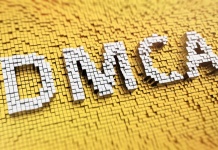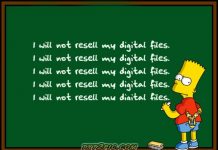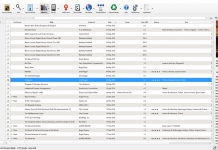 Some publishers ballyhoo e-textbooks as a win-win for them and students. But students can resell paper books, so the net savings of E may not be all they’re cracked up to be.
Some publishers ballyhoo e-textbooks as a win-win for them and students. But students can resell paper books, so the net savings of E may not be all they’re cracked up to be.
That’s among the messages in a report from Make Textbooks Affordable, which released it on behalf of other public interest groups. And it’s of special interest now that we know that a DRMish outfit like Amazon intends to make a big textbook push. What’s more, I wonder if Amazon in the long run may seek to destroy or at least cripple the used market for books or all kinds. Its purchase of Abe Books was not glad tidings for consumers. I can even see Amazon using its growing social networking capabilities and related to help lock in students further. Watch out, Blackboard!
504 students surveyed
For the just-mentioned report, MTA surveyed 504 students from Portland State University and the City Colleges of Chicago and considered prices of fifty oft-assigned textbooks. Textbook spending is now an outrage $700-$1,000 a year and is growing faster than inflation.
 Of course, as publishers can rightly point out, e-books can offer students choices not available in paper books—such as the ability to change font sizes or end the lug-around problem. But normally students can’t resell e-textbooks and may have limited printing rights or none at all.
Of course, as publishers can rightly point out, e-books can offer students choices not available in paper books—such as the ability to change font sizes or end the lug-around problem. But normally students can’t resell e-textbooks and may have limited printing rights or none at all.
PDF: A textbook toxin
Beyond that, most e-textbooks are probably in PDF. And to be blunt, we know how much PDF sucks for reading on many laptop screens since it isn’t reflowable.
If any group ought to be pushing for extensive development of the ePub standard—so that it’s more graphic friendly, for example—it’s the textbook publishers.
Different business models that played down the use of DRM might also help. Let the students keep the textbooks for private use and build private libraries on their machines!
Meanwhile here are a few more details from the L.A. Times—followed by the report’s positive comments Flat World Knowledge, a new start-up offering open textbooks:
Perhaps the report’s most surprising finding — at least to parents who can barely peel their college-age children away from their Facebook or MySpace pages — was that only one-third of students said they were comfortable reading textbooks on a computer screen. Three-fourths said they would prefer a print textbook to an electronic one if the costs were equal.
The report said commercial publishers, however, have made it cumbersome and expensive to print out digital texts. "Biology," 8th edition, from Pearson publishers, sells for $173, and the e-book goes for $86.50. But buying and printing out the text would cost $211.87, the report said.
"The cost is totally dependent on which book they’re talking about, the cost of printer cartridges and other things," Lyman said. In any case, his company has heard from students who say they only want to print out short sections, for note summaries or other purposes. "A student who wants to print out a whole book should buy a whole book."
The report also dinged commercial publishers for setting expiration dates on digital book subscriptions. "Calculus," 6th edition, from the publisher Cengage, is priced at $207.95 for a new hard copy; the e-text version is $103.99. Access expires after 180 days, although students typically study the book over two semesters, the report said.
"Once a student buys a textbook, it should be theirs to keep and access wherever and whenever they want," the study said. "Anything less than complete access would make digital books impractical for large numbers of students with limited access to computers and/or the Internet."
The report itself—which I’ll quote directly—does see potential in Flat World Knowledge’s business model:
A few publishers are already pioneering new business models. Most notably, the startup company Flat World Knowledge is publishing commercially produced open textbooks. The textbooks are developed through the same process that traditional publishers use – author royalties, peer reviews, etc. – but the similarities end there. Flat World’s open textbooks are free online, so students do not pay to access the book. Instead, Flat World plans to profit by selling print books, audio books, enhanced downloads and study aids. In other words, Flat World gives away the book for free and sells products that students are likely to purchase. In theory, this model should work, since students tend to want print books. We will find out when Flat World debuts with its first eight books in January of 2009. Their success could provide an example for other publishers to follow.
Ideally publishers will shift to open textbooks, but we know that this change will not happen overnight. However, if publishers start by meeting the three criteria established in this report, they will at least get on the right track.
OK, gang, read the report and share your feelings about it and Flat World. Will it most likely be all it’s cracked up to be? And will it be sustainable? I’m rooting for companies of this kind to be able to make it. But as I see things, it’s too early to predict the future confidently.


































Flat World’s model is a plausible one, and one I’ve thought about as a faculty union member — you need to give authors a reason to UPDATE texts, not just slap together a single manuscript. But I don’t know if it’s workable in real life, or what reasonable alternatives there are.
But I do know that if faculty authors’ interests are not addressed, you’ll have a Kindlized market that doesn’t serve student interests well.
Even if you buy a print textbook, there is no guarantee you will be able to resell it after you finish. More than once (in fact, fairly often) during my college career, I learned that I could not sell back some of my books because they were being discontinued in favor of a new edition. “Oh, come on!” I could be heard to complain. “How much can our understanding of microeconomics change in one year!”
And many people find their college textbooks make convenient references long after the courses end. The ability to keep the e-versions should not be restricted.
Im not sure how toxix PDF’s is for digital textbooks ive never ever gotten anything from reading a textbook too distant from a desk and a notepad(or MS word) and most laptops can be used for pdf reading.
The print requirement is simply rigging the study your never going to get any sensible economy of low end office or home office printers. And theres only a certain leverage for discounts before it stops making commercial sense to sell ebooks at all.
This leads to the conclusion they want: free ebooks, and while i like free stuff as much as the next guy your not going to dublicate the recources of the commercial industry with a non existing cashflow from at cost printing services, flatworld needs donations of work or money to work, the first being most likely to happens as most textbook authers have a day job as professors somewhere.
I agree with Sherman that Flat World’s model is plausible. And there are variations on that model that are also plausible if one thinks outside the box.
Unlike the K-12 sector which is so political, most university and college departments, and professors, are free to pick the textbooks and course materials they will use. To many professors, it is considered interfering in their academic freedom to be told they must use only a particular textbook, especially for upper-level and graduate courses.
And there will be no dearth of high-quality material. From my observation as a graduate student, it seemed like every other professor I knew had written their own textbook and were trying to market it to some textbook publisher — and meeting the same level of success as writers of fiction do (which means most never got to see the light of day.) And of course many professors taught entirely from their notes and shunned textbooks entirely.
For example, when I took an undergraduate chemical engineering thermodynamics class back in the 1970’s (at the U of Minnesota which at the time had the #1 rated chemical engineering program in the country), the class textbook was a mimeographed copy of a finished draft that the course professor wrote. It was excellent — probably the best ever written, and being a sort of “collector” of thermodynamic textbooks (his book was highly influenced by Lewis and Randall’s 1923 classic textbook on thermodynamics), I do have a basis to know. However, the professor had a difficult time getting it published the traditional way (I now see he finally got it published in 2001, 25 years after he finalized the first draft!)
In most cases, a professor doesn’t care about “fortune” (i.e. royalties), but rather that their textbook be recognized as authoritative and used in courses besides their own (“fame”). For younger professors, this is important to help secure tenure.
Understanding these unique dynamics opens up all kinds of possibilities and opportunities, so long as one thinks outside the box of the traditional way things are done.
I agree with Chris… the ability to resell paper textbooks is overrated. Even when I could sell back textbooks, I generally ended up getting less than 10% of the purchase price back (for example, in 2007 I spent roughly $1300 on textbooks… I sold whatever I could back for a grand total of $103.25). Last semester, I bought several of my textbooks as eBooks, which were not significantly cheaper (though it did end up being marginally cheaper), but the eBooks were much more convenient. I think one or two of them were MobiPocket (although the rest were Adobe). I’m a fan of eBook textbooks, and wish more publishers offered them.
I work for an educational publisher on eBooks – we take the PDF of the print, convert to Flash, and add multimedia and a better (well, I hope better) interface than Acrobat. I want to see edu ebooks flourish as I love building the bells and whistles, but the industry seems to have no good production or revenue model.
A recent thought I’ve had is that we should post the books free on our site, and charge a flat rate per student to any class (University or College) that uses/adopts the book.
Yes, this means you have no choice but to pay for the book if you take the class, but if you cut out print and shipping costs (a small amount really, trust me, but still, significant), and the cut the bookstore gets, and the savings on over printing stock, returns etc. loss of sales to the used book market (all factored in to the sticker price of a printed book), I think the cost will be reasonable – considering the weight savings, and that you get to keep it for forever DRM free, and in many cases you can mark it up etc. (like on an iLiad) that seems like it should be worth it.
Besides, unless a whole bunch of authors, editors, formatters etc. offer to work for free, you’re going to always have to pay something anyway. Plus, there are always royalty costs on images and media in most books.
And why do you have to pay if you take a class and other people can just use it free? Same reason you pay for music at the store, while some people download for free from Torrent sites. People can always get it for free if they want.
The way I see it, the industry has to produce value, and the people who benefit from that value have to pay a reasonable amount in order to keep it coming. 10 pound lumps of static paper for $150 (that you can maybe resell for $75 in a perfect world), compared to a virtually weightless, bookmarkable, mark-upable, interactive exam/review capable digital file for say $80, seems like better value to me.
Anyway, this is where my thinking is at at the moment. Obviously it’s a complex problem or the solution would have been implemented by now.
Finally.. the print function? That’s a passing thing isn’t it? If you have a 30 gram A4 sized device that goes a week to a month between charges and 200 dpi+ res screen, why would you really need to print part of a document from it? (Assuming the document is DRM free so copies can be passed to anyone else who may need to see it). Hmmm… I guess if you want to print a picture for your kids to colour. I can’t think of many other times.
I’d enjoy feedback on my ramblings, the sooner the industry figures out a workable model the better in my view.